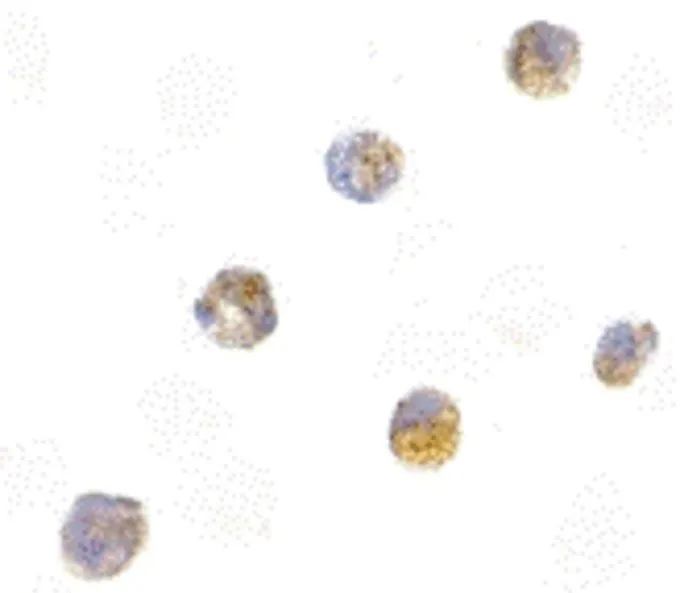TMS1 antibody [N1C3]
GTX102474
ApplicationsImmunoFluorescence, Western Blot, ImmunoCytoChemistry, ImmunoHistoChemistry, ImmunoHistoChemistry Frozen, ImmunoHistoChemistry Paraffin
Product group Antibodies
TargetPYCARD
Overview
- SupplierGeneTex
- Product NameTMS1 antibody [N1C3]
- Delivery Days Customer9
- Application Supplier NoteWB: 1:500-1:3000. ICC/IF: 1:100-1:1000. *Optimal dilutions/concentrations should be determined by the researcher.Not tested in other applications.
- ApplicationsImmunoFluorescence, Western Blot, ImmunoCytoChemistry, ImmunoHistoChemistry, ImmunoHistoChemistry Frozen, ImmunoHistoChemistry Paraffin
- CertificationResearch Use Only
- ClonalityPolyclonal
- Concentration1 mg/ml
- ConjugateUnconjugated
- Gene ID29108
- Target namePYCARD
- Target descriptionPYD and CARD domain containing
- Target synonymsASC, CARD5, TMS, TMS-1, TMS1, apoptosis-associated speck-like protein containing a CARD, caspase recruitment domain-containing protein 5, target of methylation-induced silencing 1
- HostRabbit
- IsotypeIgG
- Protein IDQ9ULZ3
- Protein NameApoptosis-associated speck-like protein containing a CARD
- Scientific DescriptionThis gene encodes an adaptor protein that is composed of two protein-protein interaction domains: a N-terminal PYRIN-PAAD-DAPIN domain (PYD) and a C-terminal caspase-recruitment domain (CARD). The PYD and CARD domains are members of the six-helix bundle death domain-fold superfamily that mediates assembly of large signaling complexes in the inflammatory and apoptotic signaling pathways via the activation of caspase. In normal cells, this protein is localized to the cytoplasm; however, in cells undergoing apoptosis, it forms ball-like aggregates near the nuclear periphery. Two transcript variants encoding different isoforms have been found for this gene. [provided by RefSeq]
- Storage Instruction-20°C or -80°C,2°C to 8°C
- UNSPSC12352203
References
- Zhang C, Chen M, Chi Z. Cytokine secretion and pyroptosis of cholesteatoma keratinocytes mediated by AIM2 inflammasomes in response to cytoplasmic DNA. Mol Med Rep. 2021,23(5):pii: 344. doi: 10.3892/mmr.2021.11983.Read this paper
- Liu Y, Wei W, Wang Y, et al. TNF-α/calreticulin dual signaling induced NLRP3 inflammasome activation associated with HuR nucleocytoplasmic shuttling in rheumatoid arthritis. Inflamm Res. 2019,68(7):597-611. doi: 10.1007/s00011-019-01244-wRead this paper







